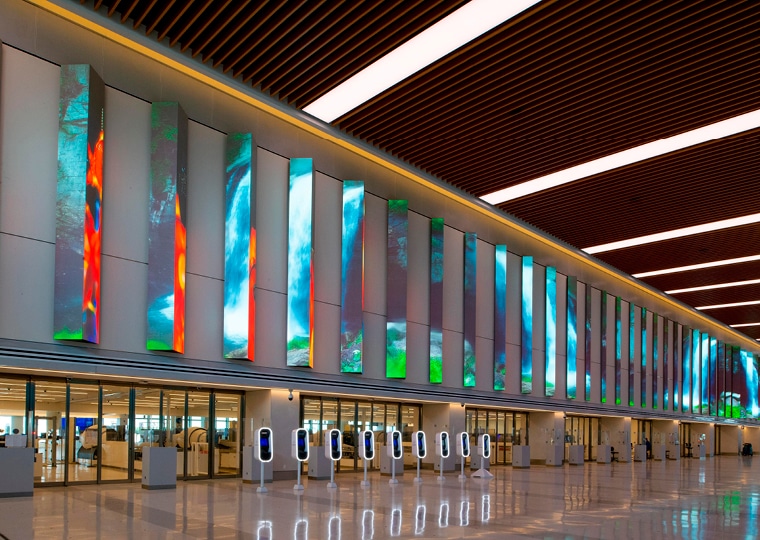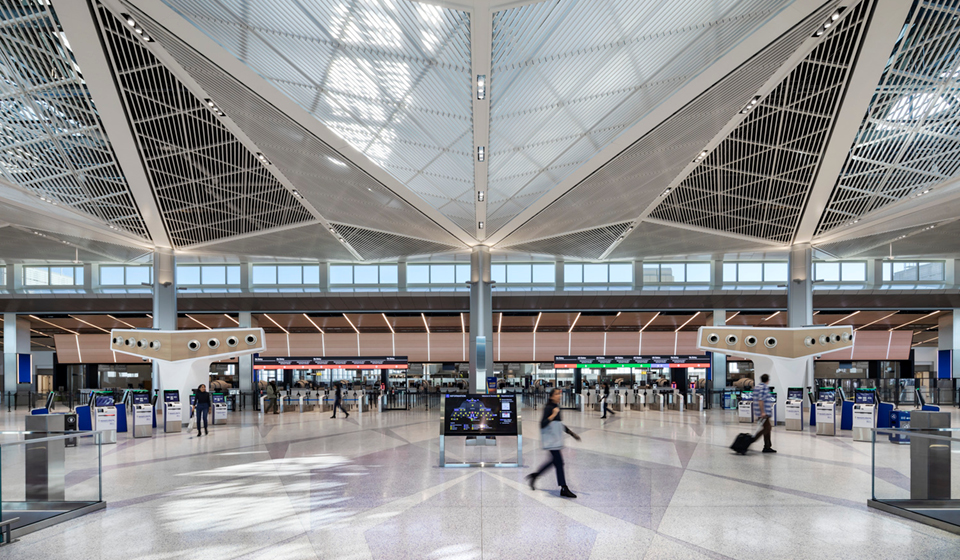
Over the last decade, a trip to one of the New York Metropolitan region’s three major airports – LaGuardia Airport, John F. Kennedy International Airport (JFK) and Newark Liberty International Airport – typically conjured a “grin and bear it” attitude for travelers who were braced for overcrowding and other unpleasant conditions within these aviation hubs.
But a major commitment from the Port Authority of New York and New Jersey (PANYNJ), in concert with some of the airport’s major stakeholders like Delta Air Lines, has transformed the New York/New Jersey airport experience in a big way this past year.
The recent opening of the new Terminal A at Newark marks the third major milestone met from PANYNJ’s larger $25 billion plan to transform the region’s airports following the completion of LaGuardia’s Terminal B and the Headhouse and two concourses at Delta Air Line’s Terminal C.
All of these projects have been met with awed reactions. At the opening of LaGuardia Terminal C’s headhouse, which is part of a larger $4 billion program to consolidate Delta’s operations into a new, $1.4 billion, 1.3-million-square-foot terminal, New York Gov. Kathy Hochul referred to the project as “symbol” of New York’s “resiliency.” At the unveiling of the new 1-million-square-foot Terminal A at Newark, PANYNJ Executive Director Rick Cotton called the facility a “world-class 21st-century marvel.”
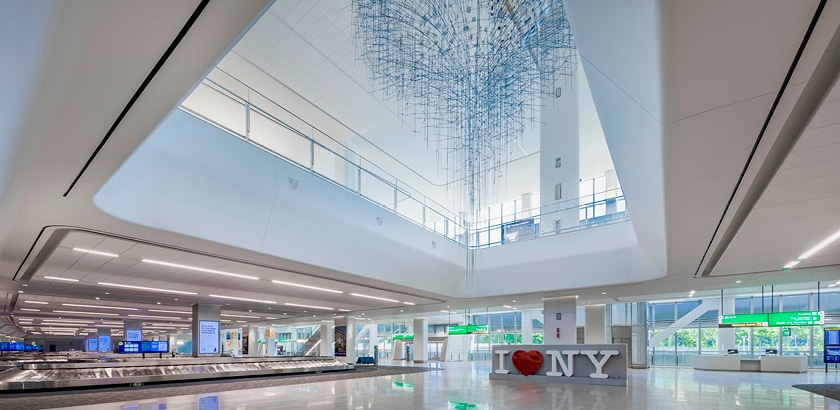
With more improvements at LaGuardia, Newark and JFK expected to come online over the next few years, STV is proud to partner with and support PANYNJ and Delta during these three major milestones. Under two separate contracts, STV provided program and construction management services for LaGuardia’s $8 billion redevelopment, including the new Terminals B and C. At Newark, STV is serving as the lead architect/engineer, working in association with Grimshaw, for the joint venture team of Tutor Perini/Parsons for Terminal A, the largest design-build project in New Jersey’s history.
And these improvements couldn’t be coming at a better time. Following the COVID-19 pandemic and a significant decrease in air travel, the International Air Transport Association is reporting a major resurgence in the aviation market sector as passenger numbers recently reached 83% of pre-pandemic levels.
“Working on airport projects is exciting, challenging and rewarding. They are some of the best projects to work on in our design and construction industry,” said Joe Thompson, STV senior vice president and head of the firm’s aviation practice. “Being a part of delivering such iconic projects is a great experience for our teams and something they are extremely proud of.”
Using Design-Build to Upgrade Newark Liberty
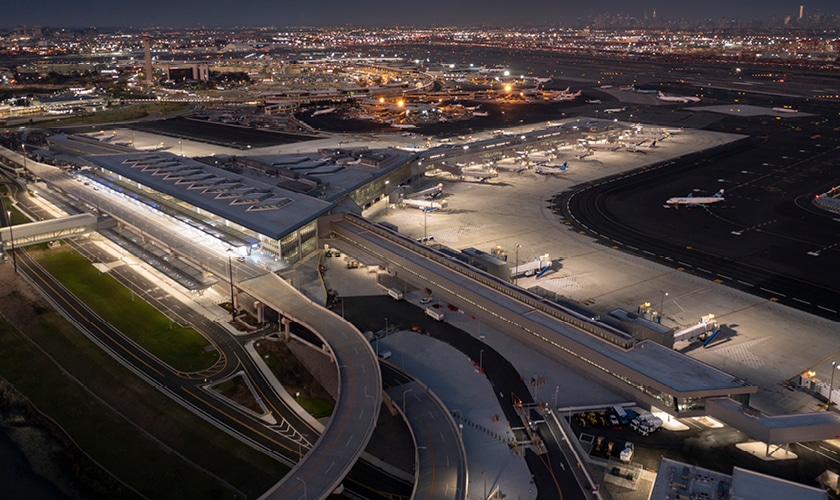
The Newark Liberty redevelopment program was initiated in 2017 to address growing demand at the airport and throughout the metropolitan region. The key element of this program is a new Terminal A, a 1-million-square-foot, 33-gate, common-use terminal building coupled with comprehensive airside and landside redevelopment and associated infrastructure work. The new terminal will replace the existing Terminal A and will serve 13.6 million passengers annually. As capacity demands increase in the future, the terminal can be expanded to 45 gates and will be able to accommodate 19. 6 million passengers annually.
The design program includes a two-level T-shaped building located just south of the existing Terminal A, comprised of a central headhouse and a single secure concourse. The scope also includes a 10,000-square-foot emergency generator building and a 1,000-foot-long pedestrian bridge that connects the terminal to a new Consolidated Rent-A-Car (CONRAC) facility with 2,700 spaces.
STV’s design team is led by Project Director Michael Meloni, P.E., and is performing architectural, structural, MEP, low voltage and baggage handling services and more.
STV’s contributions to the program were remarkable. The firm designed advanced new amenities such as the first fully automatic security checkpoint in the country. Following TSA guidelines, STV provided the layout and design of this checkpoint, providing ample space for passengers to pass through the security screening process quickly and efficiently. STV also designed Newark’s first virtual air traffic control tower, allowing airport personnel to guide planes across the airfield through extensive use of cameras and real-time video rather than direct line of sight. The virtual tower, compared to a standard brick-and-mortar tower, implies construction cost savings and facilitates increased efficiency of airport operations.
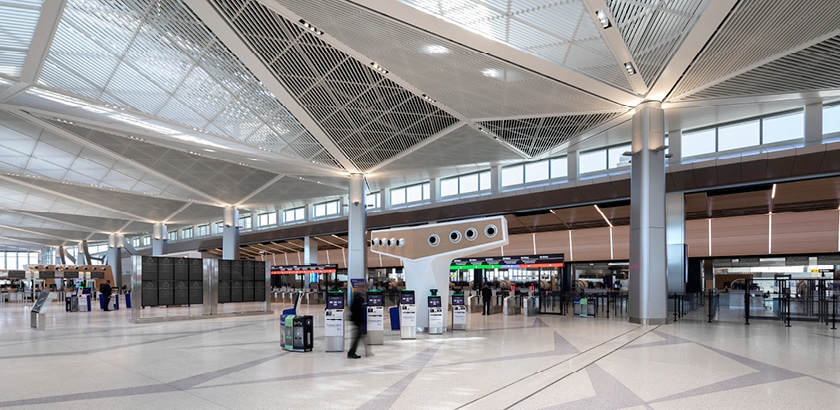
The design-build nature of the project, which received a Grand Award from the New Jersey Chapter of the American Concrete Institute earlier this year, presented a series of complex design considerations and challenges for STV’s team. Additionally, supply chain issues caused by the pandemic meant that goods that once took a week to be delivered now took a month or more.
To keep the project on pace, the structural design was developed in advance of other disciplines, and as a result, allowances were made for supporting heavy mechanical and baggage-handling equipment on long spans, including conveyors hung below the floor.
During a ribbon-cutting ceremony that marked the opening of the terminal’s first 21 gates, public officials including New Jersey Gov. Phil Murphy joined with PANYNJ’s Rick Cotton and Chairman Kevin O’Toole to commemorate this brand-new state-of-the-art gateway that is expected to generate more than $4.6 billion for the regional economy.
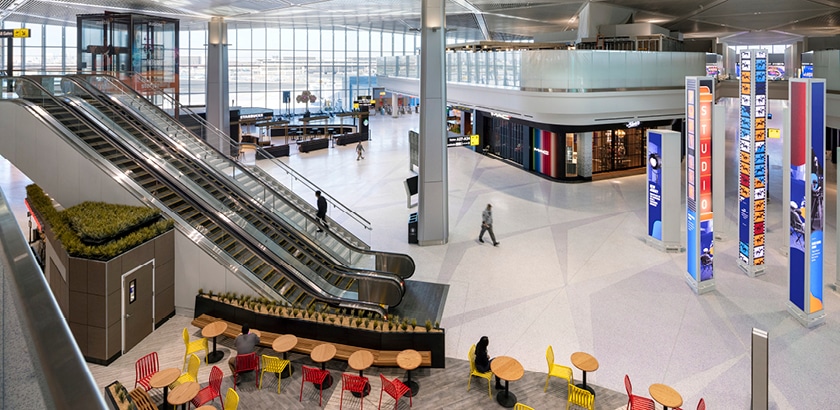
“Today’s unveiling of Terminal A marks the culmination of the largest infrastructure project I have had the honor of overseeing during my administration, as well as the realization of our vision for a state founded upon sound infrastructure and fueled by economic opportunity,” Murphy said during the ceremony.
For STV, the milestone marked a moment of great accomplishment for the design team.
“This project presented many challenges that our team overcame, but I am most proud of how we responded to each of them,” Meloni said. “The Port Authority knew what we were capable of and relied on us to help them advance the program. We delivered an outstanding outcome for our client, the community and the visitors who will travel through the new airport.”
A Whole New LaGuardia
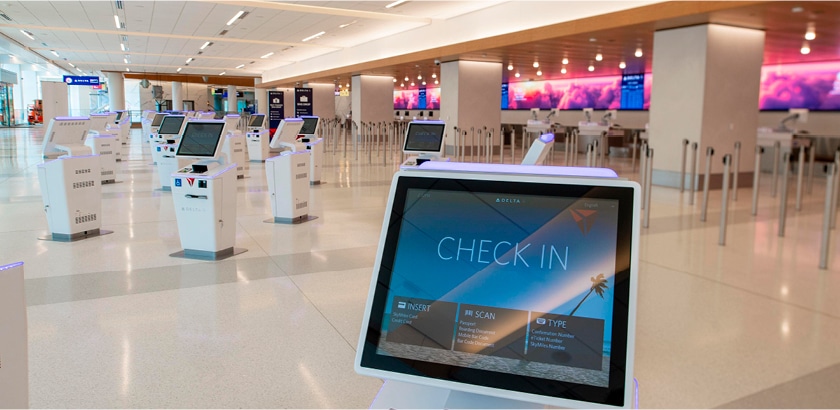
The complete reimaging of LaGuardia Airport will be one for the history books. From the moment the PANYNJ announced its comprehensive plan to construct a whole new airport in 2015, LaGuardia’s redevelopment has been one of the most watched construction programs in the country. The $8 billion program – two-thirds of which has been funded through private financing – called for new facilities, roadways, parking garages and more with the lynchpins being new Terminals B and C.
For Terminal B, STV, in joint venture with Tishman, performed construction management services under a contract with PANYNJ. Its development was a public-private partnership between the PANYNJ and LaGuardia Gateway Partners, which is composed of Vantage Airport Group, Skanska, Meridiam and JLC Infrastructure for development and equity investment.
While the new Terminal B was being built, the original 1960s-era Central Terminal Building (CTB) remained operational throughout the entire construction process through an innovative construction phasing plan. In June 2020, a soaring new 850,000-square-foot arrivals and departures hall opened to the public. The 1.3-million-square-foot terminal has two “island” concourses with a total of 35 gates. Both the eastern and western concourses are connected to the main hall by elevated steel truss pedestrian skybridges, making LaGuardia the first airport in the world with dual pedestrian skybridges. At 482 feet long and 60 feet above the ground, the bridges ensure that taxiing aircraft have two ways to enter or exit their gates.
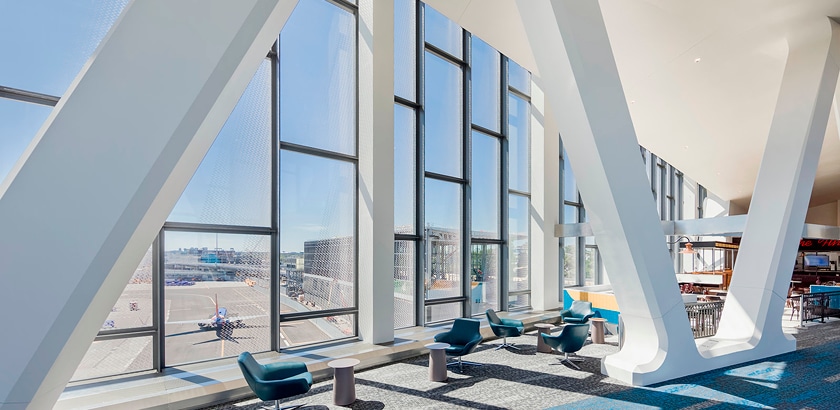
Additionally, STV oversaw the installation of solar panels on the roof of its newly built parking garage, a seven-story structure on the western side of the airport. The solar installation includes more than 3,500 solar panels that will produce more than 1.8 million kilowatt-hours of clean, renewable energy annually as part of the PANYNJ’s net zero emissions’ targets announced in 2021. It is the PANYNJ’s largest completed solar project to date.
The last part of the CTB was torn down in early 2022 to make way for active aircraft taxiways under the new terminal’s skybridges. The Terminal B program, which concluded earlier this year, has already received several prestigious honors, including UNESCO’s Prix Versailles, the global architecture and design award for best new airport in the world for 2021, and the inaugural Recognition of Special Achievement Award by the National Academy of Construction.
Concurrently with Terminal B’s ascension, STV, in joint venture with Satterfield & Pontikes, served as construction management agent for Delta Air Lines for the Terminal C construction program. The new Terminal C replaces LaGuardia’s existing outdated Terminals C and D. Within this new facility, all 37 gates will be accessible through a single headhouse rather than divided between two structures.
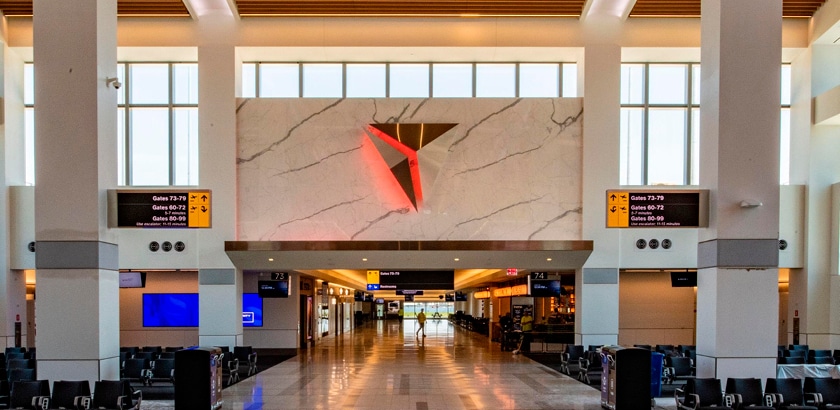
This past summer, Delta and the PANYNJ, along with several New York State dignitaries, celebrated the opening of Terminal C’s state-of-the-art headhouse. But before the ribbon could be cut on this eye-popping new headhouse, STV, and its partners, worked closely with Delta and other stakeholders to develop a plan to keep this project progressing over the course of the COVID-19 pandemic.
The pandemic had a dramatic impact on the airline industry due to travel restrictions and a steep decline in flying. Flight cancellations greatly reduced revenues for both airlines and airports. In 2020, the number of passengers using LaGuardia dropped by nearly 23 million, or 73 percent, before recovering gradually through most of 2021, according to the New York Times.
However, that drastic reduction in air travel also presented the construction team with an opportunity to accelerate work at the airport, which was declared an “essential infrastructure project.” As a result, Terminal C is expected to be fully complete by the end of 2024, almost two years earlier than originally planned.
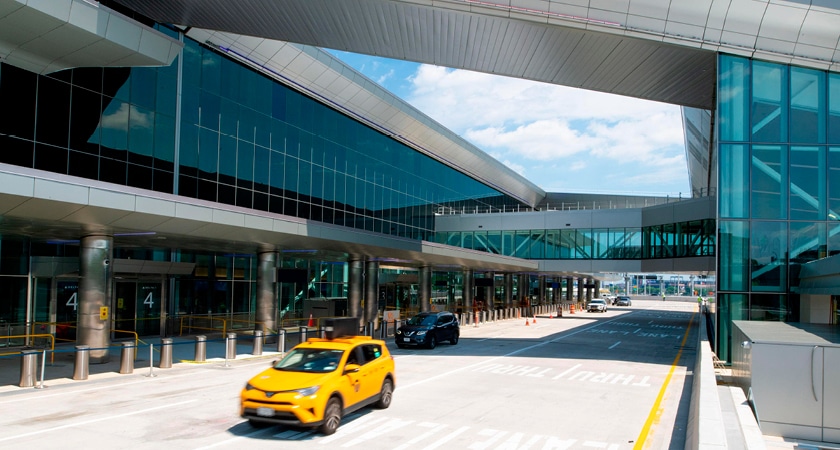
Terminal C is also earning rave reviews for its six unique, site-specific art installations, which STV played a crucial role to help coordinate and bring to life. To execute this, the construction management team worked closely with various stakeholders, including the artists and the NYC-based Queens Museum, Delta’s consultant for this initiative. As the artists created their initial physical models, STV worked closely with them to refine the designs and integrate the objects into the building structure.
“The transformation of LaGuardia Airport into a world-class destination that is internationally recognized for its beauty is an integral part of our bold vision for a new era in New York,” Hochul said at the headhouse’s opening ceremony. “The opening of Delta’s $4 billion Terminal C will help provide a state-of-the-art passenger experience, easing connections and creating lasting impressions.”

